
In VR Game Reviews
Written by Francis S
Wandering in Space is a sci-fi horror fps VR game developed by China-based Moonseer Games, and is available now on Steam Early Access. For the purposes of this review, I should note that I was running the game using the Meta Quest 2 headset on a PC VR setup with an RTX 2060 and had no performance issues, bar a few audio glitches here and there.
The game is set on a space station that’s been all but abandoned by its human crew, who have let it fall into the hands of a diverse mix of enemies. It follows a tried-and-tested formula and tasks you with clearing each floor, managing your resources and upgrading your stats.
You’re introduced to the mechanics of the game by playing through its first level, which I didn’t realize was a tutorial until I reached the exit. Although this preliminary section is intended to simply teach the player how to move and shoot, it took me the best part of an hour to complete. You’re shown how to fire your weapon, reload and pick up items from the floor. Health, oxygen and ammo are the big three.
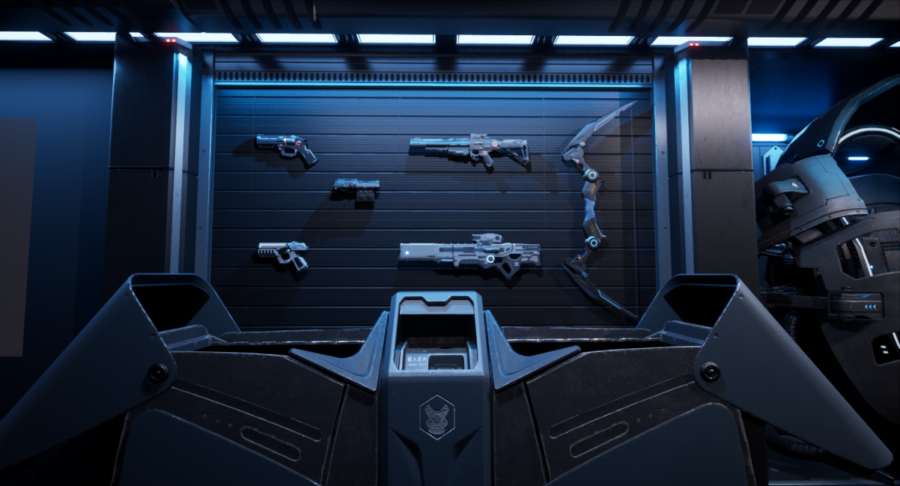
You use the left joystick to walk and the right to snap-turn. There’s no option for smooth locomotion yet, which took a bit of getting used to, but snap-turning fits in well with the fast-paced gameplay. You also have the option to teleport, but I found it to be more of a hindrance as I would quickly become disoriented. Most of the time though, I forgot the option was there.
The game does an excellent job at keeping you in the dark, and not just because atmospheric lighting is one of its strengths…
Once I was up to speed with the mechanics, I was transported to my quarters somewhere else on the space station, where the meat of the game really starts. At this point, you’re shown that there’s more to it than just moving and shooting. You can unlock new weapons and upgrade them along with your armour, or fabricate ammo using the game’s material system, which seems to be largely inspired by Arkane’s ‘Prey’. You start off with a pistol, but can craft a shotgun, an automatic rifle, a laser beam, a crossbow and an extra pistol once you have the materials, which you collect in between (or during) combat by collecting scrap and dropping it in your backpack. The last two weapons on the list were off limits throughout my playthrough, but I found myself using the pistol and the shotgun frequently.
You start by taking an elevator from your quarters to floor 01, which you’re tasked with clearing of baddies before ascending to floor 02 and so on. Much like a roguelike, if you die, you’re sent straight back to your quarters with a sense of defeat and a backpack full of masking tape and napkins that you can exchange for materials.
I’ll be honest with you; I wasn’t particularly proud of my first playthrough. The game does an excellent job at keeping you in the dark, and not just because atmospheric lighting is one of its strengths… As none of the actual enemies were in the tutorial, I had no idea how dangerous they were. So, I slipped into my natural state of crippling fear; firing blindly at mobs before running away and cowering behind cover. The first hour of zombies and (I think) aliens running towards you is pretty much terrifying.
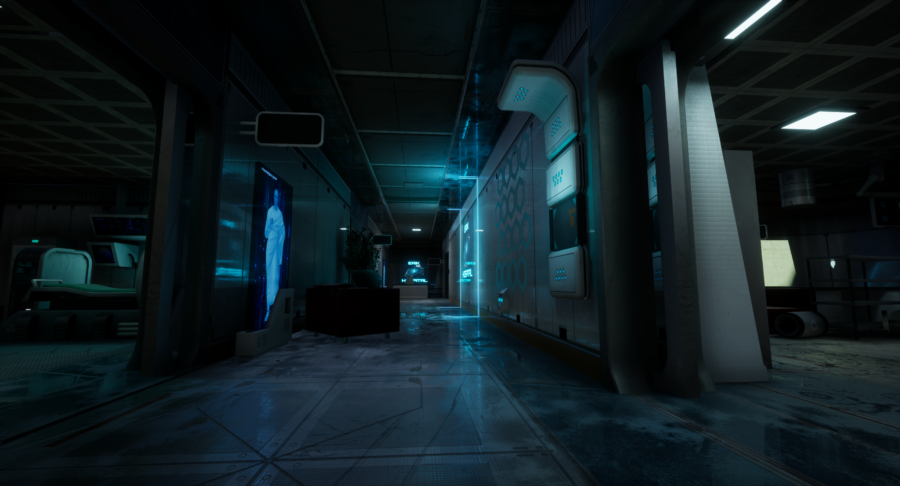
My focus was initially on keeping my distance and taking my time. I foolishly expected resources to be as bountiful as they were in the tutorial, but I quickly started gasping for air while I searched desperately for an oxygen pickup. No luck. I searched as quickly as I could, paying no mind to the alien (robot?) zombies that were flailing at me. Eventually, I turned a corner and bounced off the belly of a large enemy that spewed luminous green bile before promptly exploding, putting my painfully slow first run out of its misery and sending me back to my quarters to reassess.
After my first run, a few things were clear; every player action, no matter how mundane, feels great. Although the plot leaves a lot to be desired, it quickly took a backseat and let Wandering in Space focus on its best feature; second-to-second gameplay.
The gameplay’s two main threads are gunplay and resource management. The former involves shooting and reloading, of course, while the latter involves collecting resources from the level and placing them in your backpack, which you can access by placing your left hand over your right shoulder and pulling the backpack out in front of you. This sort of movement is common, and much like other leading VR titles such as Half-Life: Alyx, every facet of the gameplay in Wandering in Space is completely diegetic. To check your vitals, you check the meters on the back of your wrist. To check your radar; the front. To grab your primary weapon, you actually reach your hand onto your back. Think Metro, but without the static menus.
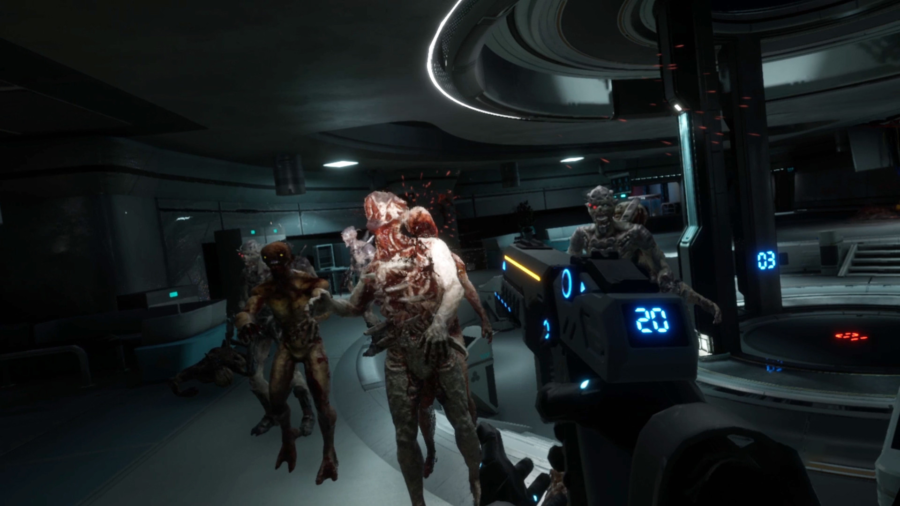
Nothing has ever instilled quite as much fear in me as completing all five levels for the first time before being greeted by an NPC who congratulates me with about a minute of un-skippable dialogue while he watches me nod my head as I gasp for air.
All of this comes together to create a very engaging and immersive experience, and after a few runs I found it very easy to slip into a John Wick-like flow, unloading and reloading clips within half a second before nailing a few droids from far away. While you’re firing, you can check your radar and ready your next clip or switch straight to your secondary if you’re in a tight spot.
After my first run, I did feel like the game could benefit from a few gameplay changes. Namely; a few more instructions, and ever-so-slightly larger colliders (components that define the shape of an object for the purposes of physical in-game collisions). It took me a few hours to realize that you store your spare ammo over your left shoulder, and if I were a real ‘super-soldier’ out on the battlefield, my brothers-in-arms would occasionally see me grab a shotgun bullet from my backpack before dropping it on the floor in the heat of the moment. In my quarters, they might catch me fabricate a few pistol clips before picking them up and throwing them over my shoulder in what must look like an act of sci-fi superstition.
The first time I went to reach for my backpack, it took a few tries. After a while, I could sense pretty accurately where to place my hand, and instead of dropping shotgun rounds on the floor, I was whipping them from my backpack to the tiny shotgun chamber. The precision with which you have to move things around proved difficult at first but made it all the more satisfying when I started to master it.
Once I had fully upgraded my pistol and my shotgun, which quickly became my go-to build, I sank all my resources into my armour’s oxygen capacity, as this was almost always my cause of death. And, at first, I really didn’t enjoy dying.
There’s something quite disheartening about being sent to your room before restarting the entire run from level one. But there’s something incredibly rewarding about tearing through your foes faster and faster each time before reaching your place of death. Much like DOOM, the enemies and the areas they roam don’t change between runs, so you start to learn exactly where you’ll (probably) find them. On my first playthrough, I felt the need to tiptoe around as cautiously as possible. After a couple of hours, I was blasting through floors like they were DOOM levels. I always managed to make it further than my last run, and I found myself becoming quite addicted.
From the get-go, the gameplay is solid, but Wandering in Space does try to dip its toe into a few too many premises.
It seems the developers may have taken another leaf out of DOOM’s book; placing up to three dispensaries on every level, where you can choose one of the three pickups it dispenses. This could be anything from a damage multiplier to an oxygen pickup, but to access the machine you have to reach a certain number of kills. There were times where my health was running very low, but to access a dispensary I had to kill 5 baddies without taking a single hit. There were no pickups lying around, so I was forced to up my game and get some kills. It was an intense stint that really showed the fun of the mechanic.
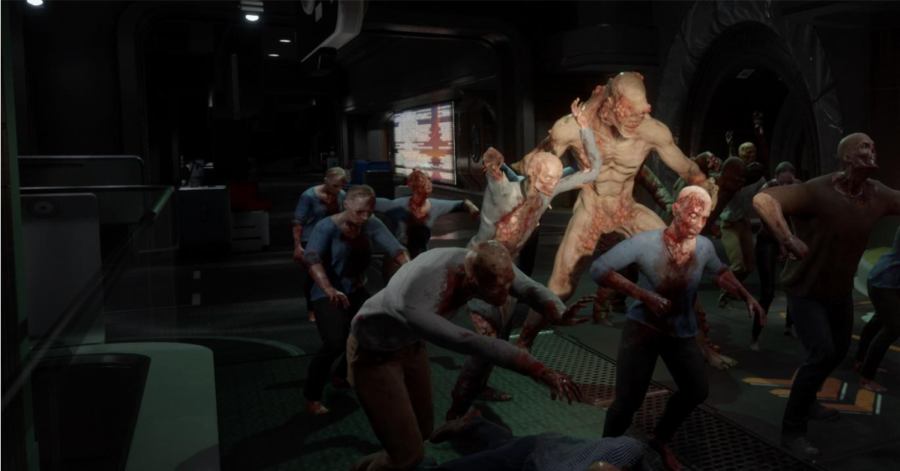
Eventually, the only thing killing me was my breathlessness. Despite my best efforts, I would often run out of oxygen and have to start from ground zero once again. In fact, the scarcity of this resource gifted me with the most intense VR moment I’ve had so far…
Nothing has ever instilled quite as much fear in me as completing all five levels for the first time before being greeted by an NPC who congratulates me with about a minute of un-skippable dialogue while he watches me nod my head as I gasp for air.
Frantically clicking through my character’s dialogue options and listening to my ally’s responses while I watched my oxygen meter edge ever closer to zero got my heart racing like nothing else, as it wasn’t clear whether I had reached any sort of checkpoint. Thankfully, the game had saved my progress. I had cleared the level and earned the respect of my super-soldier commander.
From the get-go, the gameplay is solid, but Wandering in Space does try to dip its toe into a few too many premises. The tutorial tasks you with transporting a mobile incubator and its contents (a baby) to the exit while listening to discarded voice logs that explain how the space station has been overrun by infected crew mates (zombies, basically) and how that specimen you’re carrying is humanity’s last hope. These voice logs only appear in the tutorial, and I get the impression that the whole story isn’t meant to be looked at too closely. It touches on super-soldiers, sentient AI, genetic experiments and a rebel alliance, so it’s safe to say that Wandering in Space’s strengths don’t lie in its story. I wish it had been as simple as focusing on the gameplay, but the dialogue was plentiful and impossible to skip.
I was initially skeptical of Wandering in Space… I found myself having a lot of fun.
The look of the game matches the plot, as there’s little visual consistency across the pool of enemies you’re faced with. Zombies, droids, armored pyros, boomers… Luckily there’s nothing ambiguous about your enemies or how they’ll behave. The roster is so diverse that, after a few runs, you’ll know exactly who you’re dealing with. And at the end of the day, I didn’t really care who I was mowing down. The game is fun.
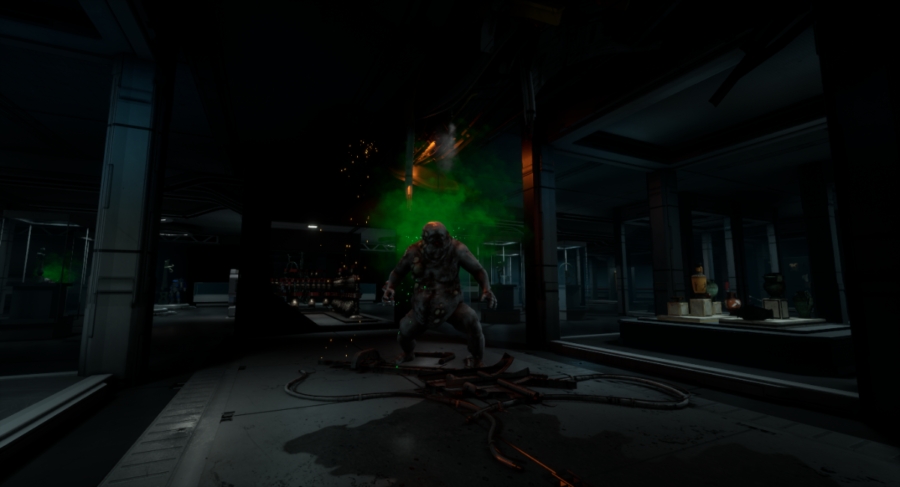
What’s more, I could play the game within a very small space. You’re given the option to stand or sit, and I found the latter to be more fun, but in both cases, I was never too worried about knocking over my coffee or punching my monitor. The motions you go through seem very well thought out. The sphere of movement is inherently restricted; placing your hand across your body doesn’t occupy much extra space at all. The same goes for grabbing items from your waist or your backpack, and you have a generous reach with which to grab magazines and plastic cups from the floor.
The only thing I kept struggling with was reloading my shotgun. Although I could do it quickly, I had to be careful not to bash the link cable to the left of my headset. Ideally, you could play untethered, but as the devs recommend an RTX 3070 Ti, Wandering in Space is not currently optimized to do so.
I was initially skeptical of Wandering in Space. The one-two punch of incomprehensible plot and unskippable dialogue put a sour taste in my mouth, but when I looked past it and started to get the hang of the mechanics, I found myself having a lot of fun. It’s only now entering early access, and the devs are far from finished, but it’s definitely a title that’s worth your time.
Wandering in Space is available now on Steam Early Access and currently has an offer for 34% off. For more information on the game’s developer, Moonseer Games, click here.
Editor’s note: Since the writing of this review, Moonseer Games has released several updates for the game, notably:
- Increasing the total amount of oxygen available on levels;
- Added a new ‘Settings’ menu for personalized options;
- Optimized the sensitivity of picking up magazines and backpacks;
- Optimization of subtitles across different languages and the addition of Korean subtitles;
- Optimized weapon holding angles for players using HTC and Valve Index devices;
- Modifications to the weapon grip mechanism;
- Improvements to laser aiming mechanics with the pistol and rifle;
- Addition of ‘System Settings’ for adjusting movement, picture quality, volume, vibration options, support for different controllers, and right joystick movement speed;
- Collider updates;
- Addition of ‘Infiltrator’ and ‘Monitor’ classes for playthrough;
- Optimized weapon aiming, enemy types, NPC animation types, interaction UI and other details.
Image credit: Auganix / Moonseer Games
About the author
Francis S
Francis is Auganix' VR Games Review writer, as well as a 3D and Technical Artist with a passion for VR, Concept Design and Interactive Media.
